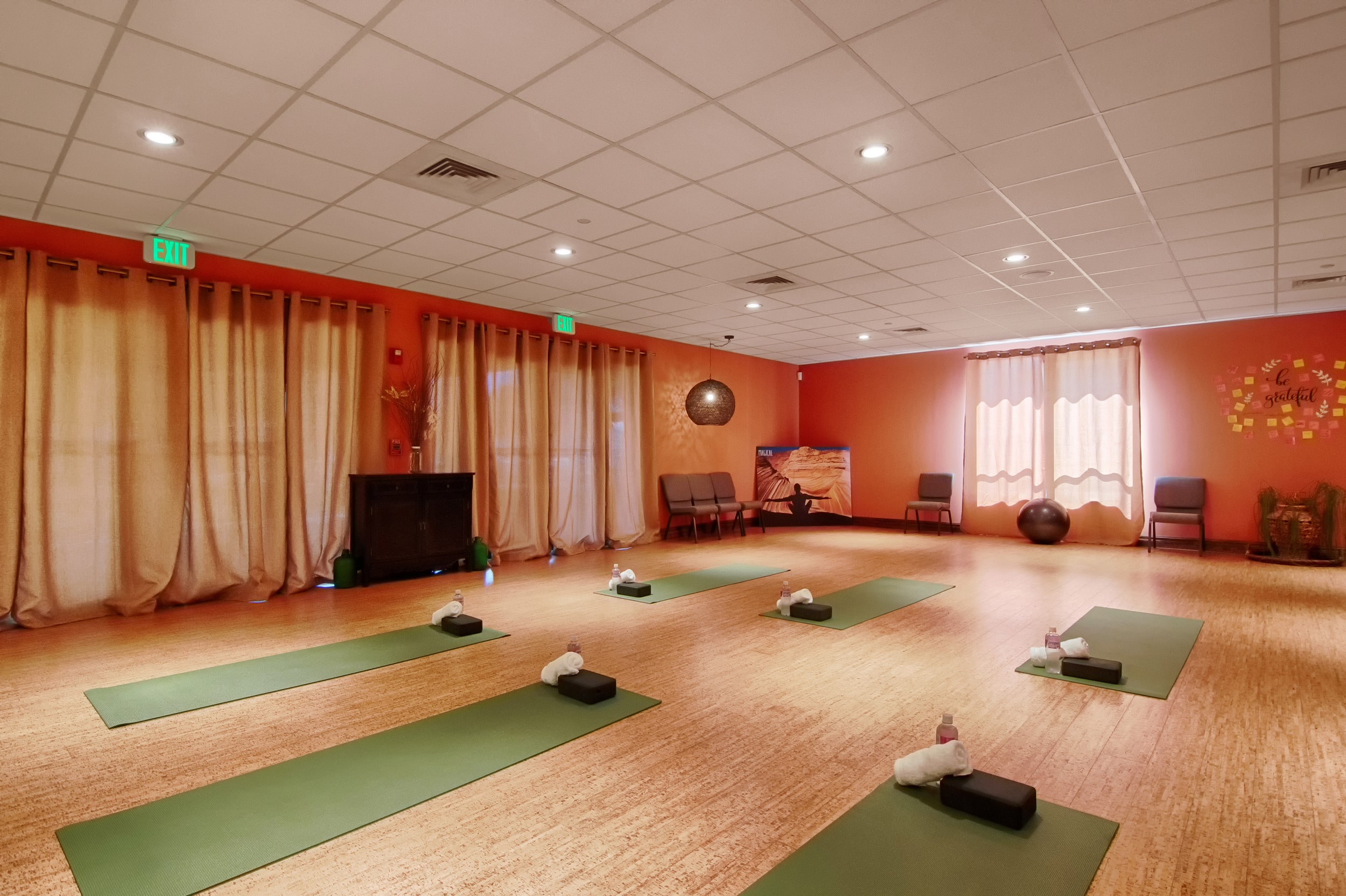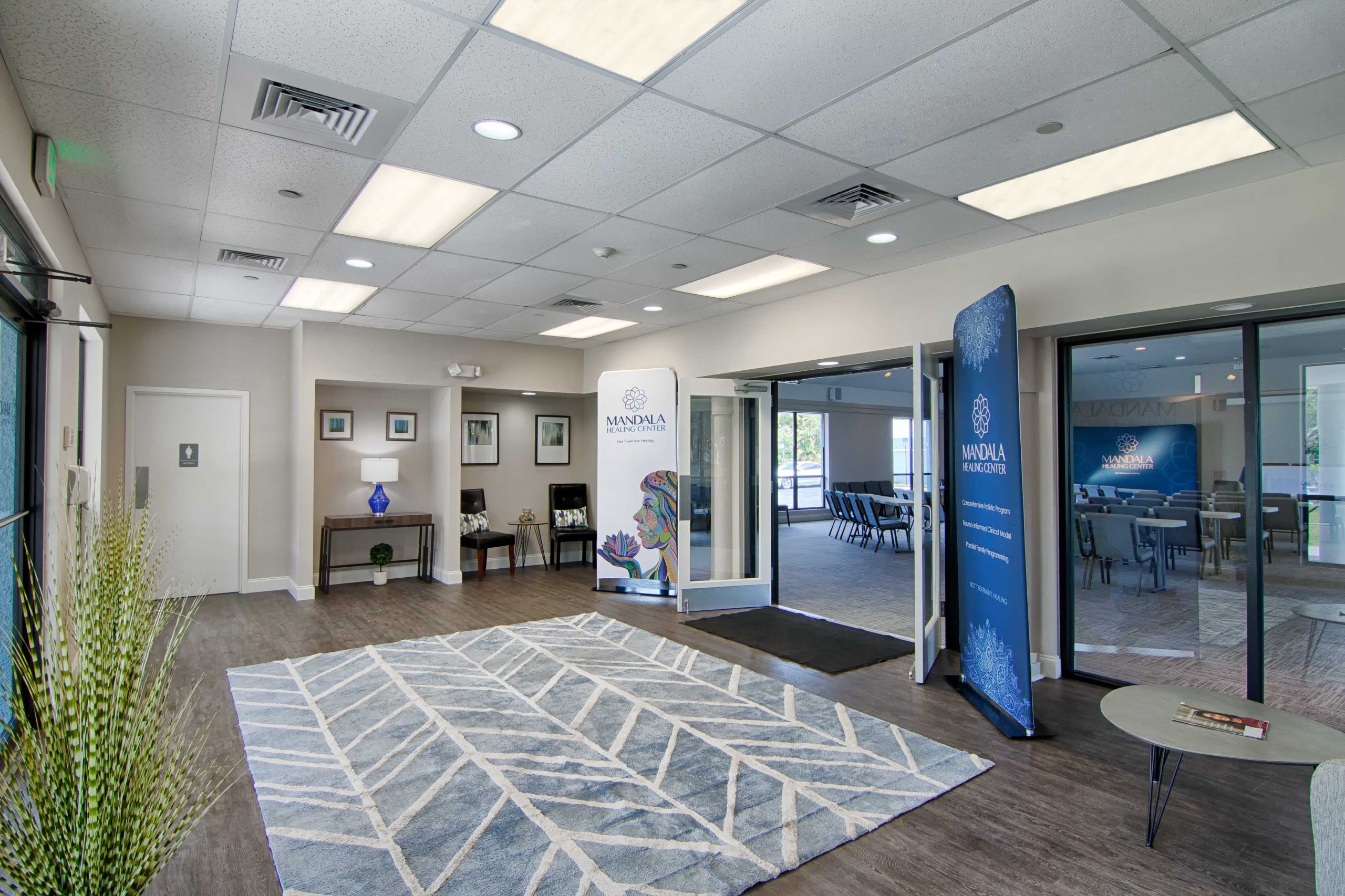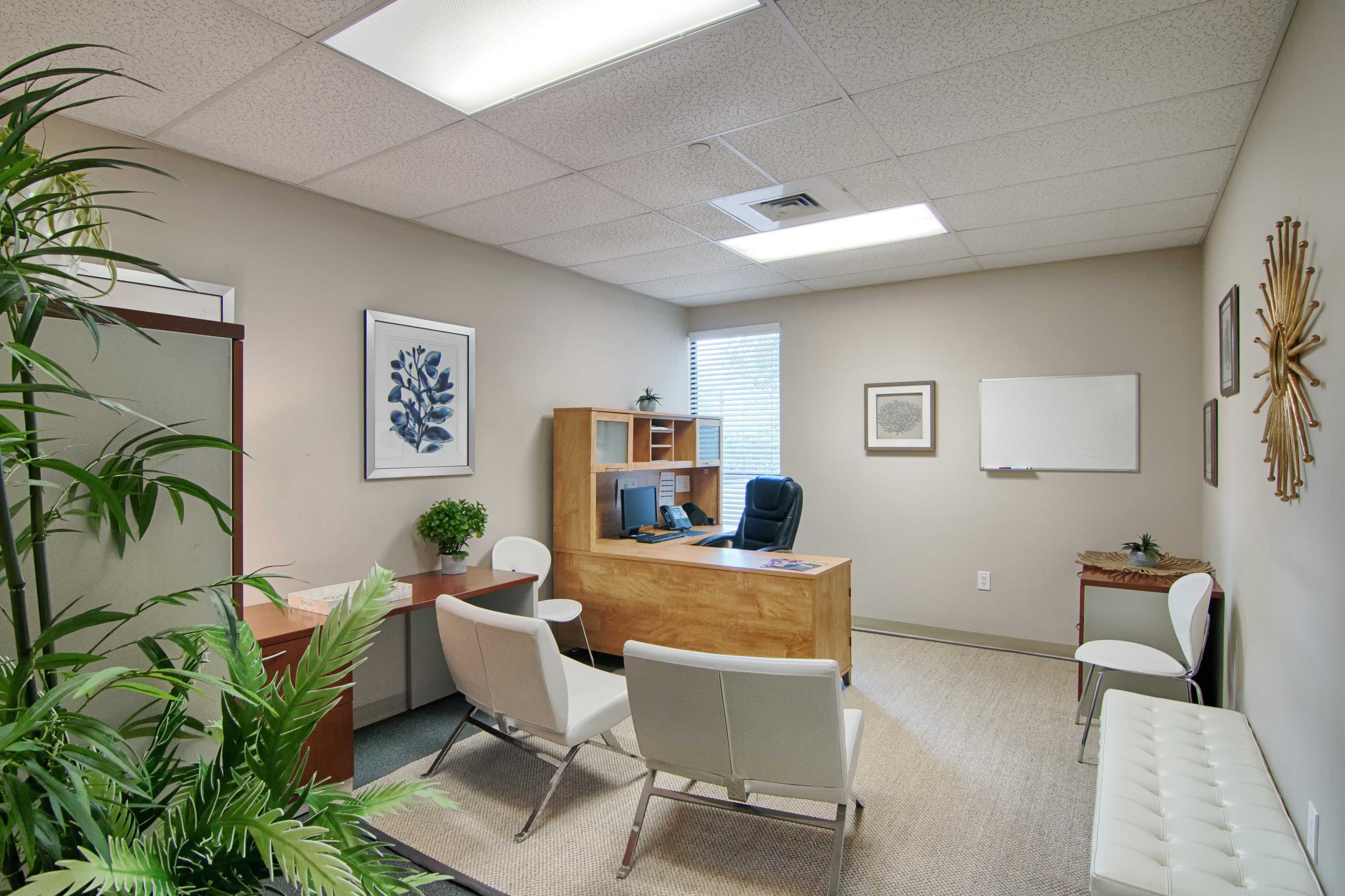Healing Through Yoga
Healing Through Yoga
Through yoga, we find our true nature and our life’s purpose.
At Mandala, we understand that recovery happens breath-by-breath, which is why healing and practicing yoga are such a natural combination. Patients work through the yoga postures, finding their own way and uncovering recovery challenges and successes as they go.
The Purpose Of Yoga In Recovery
The yogic view of addiction is that it is a separation from one’s true nature – a disconnection with the Self. Working through the subtle physical, emotional, mental, and spiritual levels of the body, patients begin to uncover the reasons for this separation and begin to transition towards wholeness once again. They learn to let go of suppressive tendencies and regain their ability to feel on all levels.
The yoga mat is a “safe” place. As we find our shortcomings on the mat, we examine our fears. We look at ourselves directly and honestly with no judgment from others or ourselves. In this way, we find our way to the other side. Darkness turns to light, failures become successes, and tears become laughter.
Through yoga, we find our true nature and our life’s purpose. The veil begins to lift as we experience our spiritual essence. Yoga peels back the layers of addiction to reveal the authentic being inside each of us.
What To Expect
Yoga classes at Mandala are designed to be light and fun, with a focus on releasing tension.
Once patients get started with the gentle asana (postures) and pranayama (breathing techniques), they start to feel more confident. As the class progresses, our yoga instructor builds upon a sequence of strength, endurance, balance and flexibility, which leads to a more challenging apex asana. The sequence is carefully broken down to help ensure success for everyone at some stage of the posture.
Sessions conclude with about 30 minutes of an easy-to-follow meditation technique called Yoga Nidra. Yoga Nidra brings awareness to the physical body through a guided method of very specific awareness. Through breath work and body-conscious techniques, patients learn to surrender to stillness and focus through visualization and positive affirmations. The goal is to reach sankalpa, which is the state between sleep and wakefulness. This is everyone’s favorite part of the class and concludes with various mudras (hand gestures) and chants of mantra (affirmations).
While in detox, some patients may not feel ready to begin a journey with yoga. We strongly recommend listening to your inner wisdom. Participation is voluntary, and our classes are aimed to provide service at the level each patient desires. Also, prior to practicing with us, our medical team must first clear each patient for yoga. Please speak with our team upon admission if you would like to practice yoga with us so we may schedule your medical clearance appointment.


What Patients Think
Most Mandala patients are open to trying yoga and very few opt out if given the opportunity. Those patients who participate in the yoga program rarely miss a class and look forward to their time on the mat. Many reschedule appointments whenever possible so as not to conflict with their yoga.
Our instructor works with patients on any physical limitations to ensure they maximize their time on the mat without causing injury. Initial fears are quickly subsided through clear and attentive instruction regarding the entire process of getting into and out of each pose safely and correctly.
Our patients love and look forward to their yoga practice, feeling that their entire day starts out on the right foot when it begins with yoga. They feel calm and relaxed throughout the day and feel that their anxiety level is lowered. Feedback is always encouraged from our patients, so the instructor can then work on specific postures and hand gestures to address their unique concerns and enhance their personal journey of healing.
Testimonials
Our Beautiful Recovery Facility
A serene healing environment provides a level of comfort and safety that influences a patient’s positive attitude and response to detox. Situated on a peaceful 8-acre campus in West Palm Beach, The Mandala Healing Center is a retreat-like sanctuary designed to allow individuals to focus completely on healing — body, mind, and spirit.









